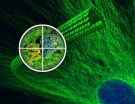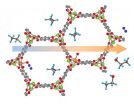EuroPCR 2014 examines whether science translates into practice with new session format
'Will this trial change my practice?' session scrutinises recently published trials
2014-05-22
(Press-News.org) 22 May 2014, Paris, France: The value of analysing published clinical trials and the benefit of informed discussion were highlighted yesterday when the ACCOAST trial data were discussed in a new session format—Will this trial change my practice?— at EuroPCR 2014. ACCOAST trial results demonstrate that pre-treatment with prasugrel in NSTEMI patients undergoing percutaneous coronary intervention (PCI) is inferior to treatment with the drug after angiography. Several other trials are also being scrutinised in the same format, which ends with a discussion with the audience members on whether the trial results would change their practice or not.
Speaking on the value of the session format, panellist Andreas Baumbach, University of Bristol, UK, said: "There is a need to translate what we read in published journals as trials, ie. the science, to what it means for the practitioner on a daily basis. What does it actually mean when a trial says that this treatment is better, or not, than another one. What does this information finally mean for the patient I am treating? This format is trying to get knowledgeable people, including a trialist, to talk about the specifics of the trial as it is published in order to tease out the data from it that are most relevant for our practice."
The session encourages practitioners to compare the population treated in the trial to the population they treat in daily practice. It also encourages practitioners to question whether the technique used is comparable to the one they employ, and to analyse the endpoints that have been chosen in the trial in order to see if they are relevant for patients.
The ACCOAST trial evaluated the effect of administering the P2Y12 antagonist prasugrel at the time of diagnosis versus administering it after the coronary angiography, if percutaneous coronary intervention (PCI) was indicated. Investigators studied 4,033 patients with NSTE acute coronary syndromes and a positive troponin level who were scheduled to undergo coronary angiography within two to 48 hours after randomisation. Patients were randomly assigned to receive prasugrel before the angiography (pre-treatment group, 30mg loading dose) or placebo (control group). When PCI was indicated, an additional 30mg of prasugrel was given in the pre-treatment group at the time of PCI and 60mg of prasugrel was given in the control group.
Reviewing the ACCOAST trial data, Peter Juni, Clinical Trials Unit and Institute of Social and Preventative Medicine, University of Bern, Switzerland, said: "In NSTE-ACS patients managed invasively within 48 hours of admission, pre-treatment with prasugrel did not reduce major ischaemic events through 30 days, but increased major bleeding complications."
Andreas Baumbach added, "The ACCOAST trial is a wonderful trial that has tried to answer the clinically relevant question of whether pre-treatment with prasugrel would be beneficial to patients. The study was conducted within a practice environment that was situated with rapid access to a cath lab, showed that there is no benefit for pre-treatment with this half dose of prasugrel. It also showed more bleeding events in patients who received this dose. There are a number of very interesting questions about this trial, the main being that we are not sure whether we can extrapolate these results to pre-treatment with other drugs that have been shown to be beneficial in other trials."
With regard to how the ACCOAST results applied to clinical practice, Baumbach noted that judging by the show of hands in yesterday's session, the majority of the audience would not change their current practice. "The trial is relevant, but we need new trials to see whether we can advance the treatment for those patients," he said.
INFORMATION:
Notes to Editors
For more information on this press release, please contact Isabelle Uzielli, email: iuzielli@europcr.com
Further information on press registration may be found at http://www.europcr.com/page/press/393-press.html
What is EuroPCR?
EuroPCR, the official annual meeting of the European Association for Percutaneous Cardiovascular Interventions (EAPCI), a registered branch of the European Society of Cardiology, is the world-leading course in interventional medicine. PCR has established a distinctive format for educational activities in the field of cardiovascular interventions. Beyond its flagship course in Paris that gathers more than 12,000 participants every year, PCR organises annual courses in Singapore, London, Dubai and Cape Town.
For further information on EuroPCR, AsiaPCR/SingLIVE, PCR London Valves, GulfPCR-GIM, AfricaPCR & PCR, please contact: Anne-Sophie Lartigau at aslartigau@europa-organisation.com.
For more information, please visit http://www.europcr.com
ELSE PRESS RELEASES FROM THIS DATE:
New details on microtubules and how the anti-cancer drug Taxol works
2014-05-22
A pathway to the design of even more effective versions of the powerful anti-cancer drug Taxol has been opened with the most detailed look ever at the assembly and disassembly of microtubules, tiny fibers of tubulin protein that form the cytoskeletons of living cells and play a crucial role in mitosis. Through a combination of high-resolution cryo-electron microscopy (cryo-EM) and new methodology for image analysis and structure interpretation, researchers with the Lawrence Berkeley National Laboratory (Berkeley Lab) and the University of California (UC) Berkeley have produced ...
Which way is up?
2014-05-22
What do sled dogs and cell clusters have in common? According to research by UC Santa Barbara's Denise Montell, they both travel in groups and need a leader to make sure they all follow in the same direction.
Montell, Duggan Professor of Molecular Cellular and Developmental Biology, and colleagues worked on three independent projects involving E-cadherin, a protein found in epithelial cells throughout the body. The researchers used fruit-fly ovaries to uncover the role played by E-cadherin in collective cell migration. Their findings are reported today in the journal ...
Eumelanin's secrets
2014-05-22
CAMBRIDGE, Mass-- Melanin — and specifically, the form called eumelanin — is the primary pigment that gives humans the coloring of their skin, hair, and eyes. It protects the body from the hazards of ultraviolet and other radiation that can damage cells and lead to skin cancer, but the exact reason why the compound is so effective at blocking such a broad spectrum of sunlight has remained something of a mystery.
Now researchers at MIT and other institutions have solved that mystery, potentially opening the way for the development of synthetic materials that could have ...
US obesity epidemic making all segments of the nation fatter, study finds
2014-05-22
The nation's obesity epidemic is striking all groups of Americans, affecting those with more education and those with less education, as well as all ethnic groups, according to a new analysis that challenges prevailing assumptions about the reasons why the nation is getting heavier.
While some differences in weight are evident between groups based on race and education levels, all Americans have been getting fatter at about the same rate for the past 25 years, even as the nation saw increases in leisure time, increased availability of fruit and vegetables, and increases ...
Being Sardinian puts a smile on the face of the elderly
2014-05-22
Residents of the Italian island of Sardinia are known for their longevity. Now, a new study also shows that elderly Sardinians are less depressed and generally are in a better mental frame of mind than peers living elsewhere. The study, led by Maria Chiara Fastame and Maria Pietronilla Penna of the University of Cagliari in Italy and Paul Hitchcott from the Southampton Solent University in UK, is published in Springer's journal Applied Research in Quality of Life.
Various tests to measure the mental state and capacity of elderly people were performed on 191 cognitively ...
Gene therapy extends survival in an animal model of spinal muscular atrophy
2014-05-22
New Rochelle, NY, May 22, 2014—To make up for insufficient amounts of SMN protein, the cause of the inherited neuromuscular disease spinal muscular atrophy (SMA), researchers have successfully delivered a replacement SMN1 gene directly to the spinal cords of animal models of SMA. A new study demonstrating that enough copies of the SMN1 gene can be delivered to the spinal cord motor neurons to extend the survival of the treated animals is published in Human Gene Therapy, a peer-reviewed journal from Mary Ann Liebert, Inc., publishers. The article is available free on the ...
JILA study finds crowding has big effects on biomolecules
2014-05-22
Crowding has notoriously negative effects at large size scales, blamed for everything from human disease and depression to community resource shortages. But relatively little is known about the influence of crowding at the cellular level. A new JILA study shows that a crowded environment has dramatic effects on individual biomolecules.
In the first data on the underlying dynamics (or kinetics)of crowded single biomolecules , reported in Proceedings of the National Academy of Sciences,* JILA researchers found that crowding leads to a 35-fold increase in the folding rate ...
From separation to transformation: Metal-organic framework shows new talent
2014-05-22
This gift from science just keeps on giving. Measurements taken at the National Institute of Standards and Technology (NIST) show why a material already known to be good at separating components of natural gas also can do something trickier: help convert one chemical to another, a process called catalysis. The discovery is a rare example of a laboratory-made material easily performing a task that biology usually requires a complex series of steps to accomplish.
The material is a metal-organic framework (MOF), one of a class of substances whose porosity, high surface area ...
Don't blink! NIST studies why quantum dots suffer from 'fluorescence intermittency'
2014-05-22
Researchers at the National Institute of Standards and Technology (NIST), working in collaboration with the Naval Research Laboratory, have found that a particular species of quantum dots that weren't commonly thought to blink, do.
So what? Well, although the blinks are short—on the order of nanoseconds to milliseconds—even brief fluctuations can result in efficiency losses that could cause trouble for using quantum dots to generate photons that move information around inside a quantum computer or between nodes of a future high-security internet based on quantum telecommunications.
Beyond ...
Putting a number on opinion dynamics in a population
2014-05-22
Philadelphia, PA—Opinion formation in a large population is influenced by both endogenous factors, such as interaction with one's peers—in-person and via social media—as well as exogenous factors, such as the media, of which mainstream media is one of the most influential factors. For example, according to a study conducted by the National Bureau of Economic Research in 2006, after the introduction and expansion of Fox News in the United States between 1996 and 2000, an estimated 3-28% of the audience was persuaded to vote Republican.
In a recent paper published in ...
LAST 30 PRESS RELEASES:
Sleeping in on weekends may help boost teens’ mental health
Study: Teens use cellphones for an hour a day at school
After more than two years of war, Palestinian children are hungry, denied education and “like the living dead”
The untold story of life with Prader-Willi syndrome - according to the siblings who live it
How the parasite that ‘gave up sex’ found more hosts – and why its victory won’t last
When is it time to jump? The boiling frog problem of AI use in physics education
Twitter data reveals partisan divide in understanding why pollen season's getting worse
AI is quick but risky for updating old software
Revolutionizing biosecurity: new multi-omics framework to transform invasive species management
From ancient herb to modern medicine: new review unveils the multi-targeted healing potential of Borago officinalis
Building a global scientific community: Biological Diversity Journal announces dual recruitment of Editorial Board and Youth Editorial Board members
Microbes that break down antibiotics help protect ecosystems under drug pollution
Smart biochar that remembers pollutants offers a new way to clean water and recycle biomass
Rice genes matter more than domestication in shaping plant microbiomes
Ticking time bomb: Some farmers report as many as 70 tick encounters over a 6-month period
Turning garden and crop waste into plastics
Scientists discover ‘platypus galaxies’ in the early universe
Seeing thyroid cancer in a new light: when AI meets label-free imaging in the operating room
Neutrophil-to-lymphocyte ratio may aid risk stratification in depressive disorder
2026 Seismological Society of America Annual Meeting
AI-powered ECG analysis offers promising path for early detection of chronic obstructive pulmonary disease, says Mount Sinai researchers
GIMM uncovers flaws in lab-grown heart cells and paves the way for improved treatments
Cracking the evolutionary code of sleep
Medications could help the aging brain cope with surgery, memory impairment
Back pain linked to worse sleep years later in men over 65, according to study
CDC urges ‘shared decision-making’ on some childhood vaccines; many unclear about what that means
New research finds that an ‘equal treatment’ approach to economic opportunity advertising can backfire
Researchers create shape-shifting, self-navigating microparticles
Science army mobilizes to map US soil microbiome
Researchers develop new tools to turn grain crops into biosensors
[Press-News.org] EuroPCR 2014 examines whether science translates into practice with new session format'Will this trial change my practice?' session scrutinises recently published trials




